1000+ MCQs for PCL Nursing Entrance Preparation || Part-02 ||
1000+ MCQs for PCL Nursing Entrance Preparation
Part-2
With the changing needs as well as Nepal, Government's health policy, CTEVT took an action to respond to these needs; as a result CTEVT has started the PCL Nursing course. PCL Nursing is one of the prominent and popular disciplines within the Nursing profession.
PCL Nursing has its full form of Proficiency Certificate Level in Nursing.
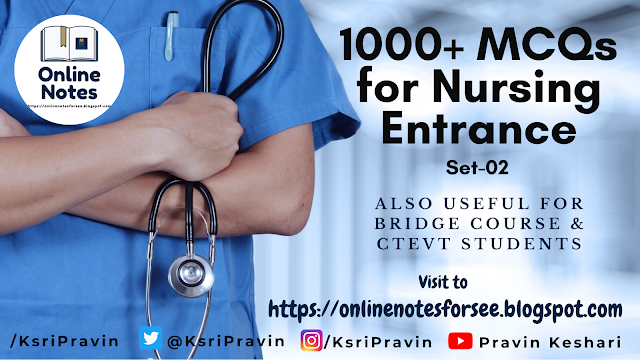
Haven't seen Part-1 yet???
In this particular series of "PCL Nursing Entrance Preparation", each set will contain 50 MCQs (with Answer key) for students to solve. About 1000 MCQs will be provided related with the entrance preparation for PCL Nursing or Staff Nurse. Notes will also be posted, if required.
If you find this blog useful after reading, do not forget to share it with your friends. Refer to your friends, so that they can also enjoy these questions.
Need full PDF syllabus of PCL Nursing???
Click on the icon below to download the full syllabus in PDF

Your MCQs for PCL Nursing starts from here:
1) Which artery is used to take blood pressure?
a) Brachial
b) Ulnar
c) Radial
d) Axillary
2) Tricuspid valve is situated at....
a) Between left atrium and left ventricle
b) Between right atrium and left ventricle
c) Between right ventricle and right atrium
d) Between left ventricle and aorta
3) According to Antigen present on the surface of RBC, Blood is divided into......groups.
a) 4
b) 5
c) 6
d) 7
4) Which is the longest blood vessels in our body?
a) Subclavian
b) Inferior venacava
c) Circle of willis
d) None
5) Which blood vessels supply blood vessels itself?
a) Vasa nervorum
b) Vasa vasorum
c) Circle of Willis
d) None
6) Differential count of RBC is found maximum at inhabitant of.....
a) Kathmandu
b) Biratnagar
c) Namche
d) Nepalgunj
7) Green or blue colored blood vessels seen in limits are....
a) Veins
b) Arteries
c) Arterioles
d) Lymph vessels
8) The commonest cause of anemia in Nepal is.....
a) Haemolysis
b) Haemorrhage
c) Iron deficiency
d) Malaria
9) The range of fetal heart rate is.......per minute.
a) 50 to 70
b) 70 to 100
c) 120 to 160
d) 140 to 200
10) Peptic ulcer is most common in a person with blood group....
a) 'A'
b) 'B'
c) 'AB'
d) 'O'
11) Arterial and venous blood get mixed in the....
a) Spleen
b) Liver
c) Kidney
d) Brain
12) The pH value of blood is....
a) 6.4
b) 7
c) 7.4
d) 8
13) The donated blood should be used within......
a) 4 weeks
b) 10 weeks
c) 4 months
d) 10 months
14) The process of formation of blood ......
a) Hemopoiesis
b) Hemolysis
c) Haematoma
d) Hemoptysis
15) Blood cancer means....
a) Excessive production of RBCs
b) Excessive production of pre-mature WBCs
c) Excessive production of thrombocytes
d) Reduction in the number of RBC
16) Blood circulation in human was first of all discovered by.....
a) Lord Lister
b) Alexander Fleming
c) Louis Pasteur
d) William Harvey
17) During sleep, Blood pressure is.....
a) Increased
b) Decreased
c) Remain same
d) None of the above
18) Which of the following blood group has a maximum frequency of occurrence?
a) 'AB'
b) 'A'
c) 'O'
d) 'B'
19) Who was the first man to perform heart transplant?
a) Charles Lavernae
b) William Harvey
c) Christian Bernard
d) Land Stenair
20) The thermometer was discovered by....
a) Newton
b) Dalton
c) Kelvin
d) Galileo Galilee
21) For clinical purpose, who used thermometer first?
a) Newton
b) Sanctorius
c) Fahrenheit
c) Celsius
22) The commonest type of anemia found in pregnancy is..
a) Iron deficiency
b) Hemorrhagic
c) Hook worm anemia
d) Hemolytic
23) Which of the following organ act as a 'Blood bank'?
a) Kidney
b) Heart
c) Spleen
d) Liver
24) The largest blood cell is.....
a) Erythrocyte
b) Basophil
c) Neutrophil
d) Monocyte
25) The commonest type of heart disease in Nepal is....
a) Rheumatic fever
b) Mitral stenosis
c) Hypertension
d) Angina pectoris
26) Which of the following clotting factor is also known as anti-haemophilic factor?
a) 2nd
b) 8th
c) 9th
d) 12th
27) The sphygmomanometer was introduced by....
a) William Harvery
b) Land Steiner
c) Riva - Rocci
d) Joseph Lister
28) The volume of the blood in the body is approximately...........of the body.
a) 1/6 part
b) 1/10 part
c) 1/15 part
d) 1/12 part
29) Albumin is one of the ingredient of plasma protein synthesized in.......
a) Liver
b) Spleen
c) Pancreas
d) Brain
30) Viscosity of blood is mainly due to .......
a) RBCs
b) WBCs
c) Thrombocytes
d) Electrolytes
31) Who discovered the 'ABO' system of blood grouping?
a) Robert Banting
b) Christian Bernard
c) Land Stenair
d) Willum Harvey
32) Which blood group is often called Universal receiver?
a) 'B'
b) 'AB'
c) 'A'
d) 'O'
33) Person who has blood group.......is known as Universal donor.
a) 'O'
b) 'AB'
c) 'A'
d) 'B'
34) Which blood vessels are provided with semilunar valve?
a) Arteries
b) Capillaries
c) Arterioles
d) Veins
35) Portal vein is formed by the union of....
a) Two common iliac veins
b) Two internal iliac veins
c) Spleenic and inferior mesentric vein
d) Spleenic and superior mesentric vein
36) Main respiratory muscle that is diaphragm is supplied by........artery.
a) Coronary
b) Phernic
c) Renal
d) Vasa vasorum
37) The first branch of human aorta is............artery.
a) Left common carotid
b) Left Subclavian
c) Coronary
d) Brachio-cephalic
38) Lowest blood pressure is in the.......
a) Venacava
b) Aorta
c) Vein
d) Capillary
39) What percentage of total cardiac output goes to the kidney?
a) 10%
b) 15%
c) 22%
d) 30%
40) In an ECG, T-wave corresponds.......
a) Arterial depolarization
b) Ventricular repolarization
c) Arterial repolarization
d) Ventricular depolarization
41) The characteristic lesion of acute Rheumatic fever is.....
a) Negri body
b) Glant body
c) Golgi body
d) Aschoff body
42) DC shock (Defibrillation) is used to treat.....
a) Arterial flutter
b) Ventricular fibrillation
c) Supra ventricular tachycarda
d) All of the above
43) Vegans usually have rate incidence of....
a) Arthritis
b) Tuberculosis
c) Ischaemia
d) Lung cancer
44) Clinically, abdominal cavity is divided into......region.
a) 4
b) 9
c) 10
d) 12
45) Which enzyme is not secreted by pancreas?
a) Amylase
b) Tripsinogen
c) Lipase
d) Renin
46) Which of the following organ does not secrete hormone?
a) Kidney
b) Pancreas
c) Bladder
d) Testes
47) There are.........lobes in liver.
a) 2
b) 3
c) 4
d) 5
48) Fat is emulsified by bile. Bile is produced in......
a) Pancreas
b) Gall bladder
c) Intestine
d) Liver
49) Insulin hormone is secreted by.....cell of pancreas.
a) Beta cell
b) Alpha cell
c) Both 'a' & 'b'
d) None
50) Which of the following is function of insulin hormone?
a) To decrease blood glucose level.
b) To increase blood glucose level
c) Both 'a' & 'b'
d) None

If you found this post useful then do not forget to share it with your friends. Refer it to your friends and colleagues so that they can also get this questions for free of cost.
Do you have any problem in Chemistry???
Learn Basics of Chemistry for improvement. This series contains from details of first 20 elements to number of electrons, electronic configurations, valencies, their ions and atomic structures.
Click the link below to get those posts
|
Answer Key |
||||
|
|
|
|
|
|
|
1.a |
2.c |
3.a |
4.c |
5.b |
|
6.c |
7.a |
8.c |
9.c |
10.d |
|
11.b |
12.c |
13.a |
14.a |
15.b |
|
16.d |
17.b |
18.c |
19.c |
20.d |
|
21.b |
22.a |
23.c |
24.d |
25.a |
|
26.b |
27.c |
28.d |
29.a |
30.a |
|
31.c |
32.b |
33.a |
34.d |
35.d |
|
36.b |
37.c |
38.a |
39.c |
40.b |
|
41.d |
42.d |
43.c |
44.b |
45.d |
|
46.c |
47.d |
48.d |
49.a |
50. |





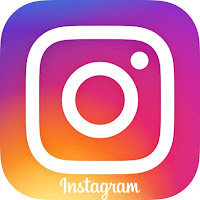



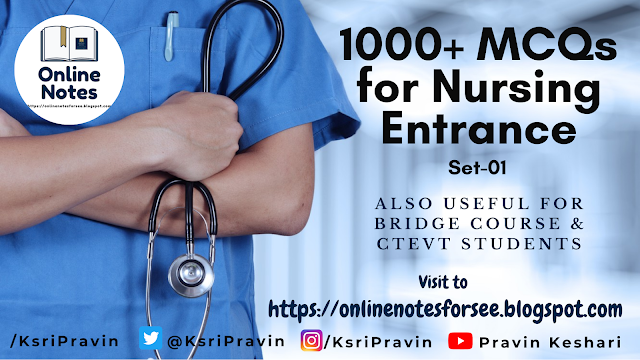


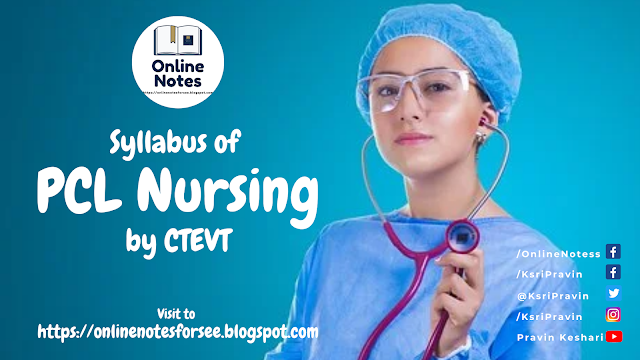
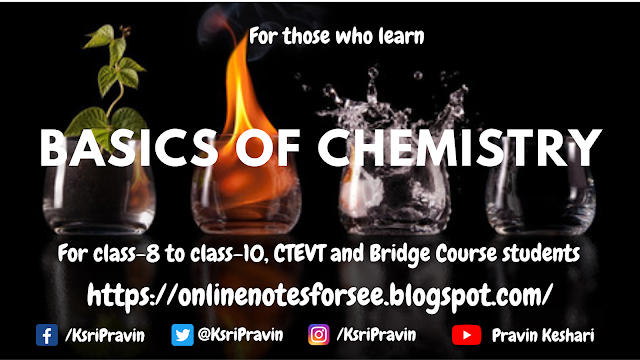

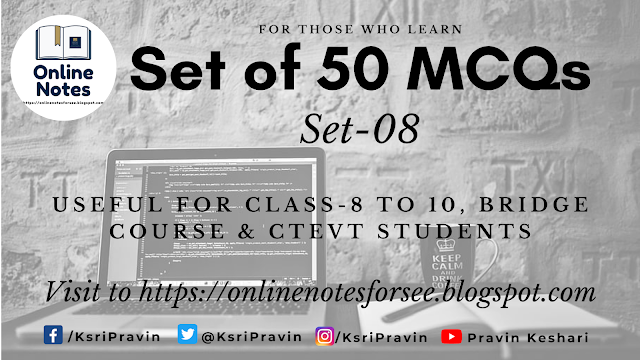

Comments
Post a Comment
Please do not comment any spam link in the comment box.